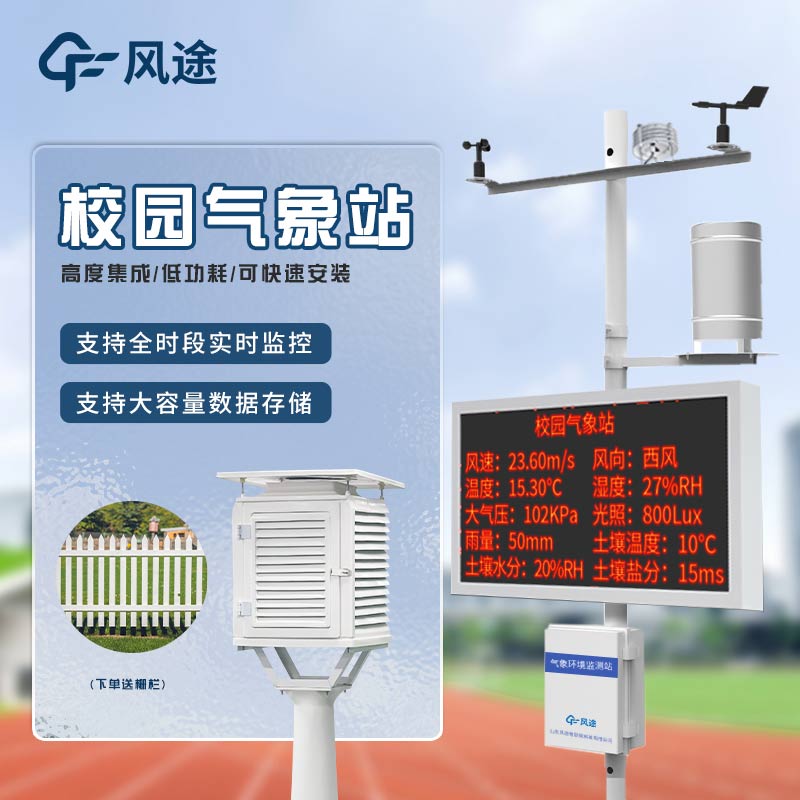Meteorological environment monitoring equipment supplier
Insist on doing high-precision customer favorite technology products
Campus climate and environment monitoring is the work of monitoring and evaluating various elements of the climate and environment within the campus.
The monitoring covers multiple aspects. In terms of meteorological elements, it is necessary to accurately measure temperature, humidity, air pressure, wind speed and wind direction. These data are closely related to the physical comfort of teachers and students. For example, inappropriate temperature and humidity can easily lead to health problems. Air quality monitoring focuses on pollutants such as sulfur dioxide, nitrogen dioxide, particulate matter (PM2.5, PM10), and ozone. Schools are densely populated, and good air quality is the guarantee of the health of teachers and students. Lighting conditions cannot be ignored either. Monitoring the intensity and duration of indoor and outdoor lighting is related to the protection of students' eyesight. The scope of noise level monitoring includes both the periphery and the inside of the school. If the noise from traffic, construction, etc. exceeds the standard, it will inevitably interfere with teaching and affect the hearing and attention of teachers and students.
The monitoring methods are diversified. On the one hand, it relies on instrument monitoring. Professional thermometers, hygrometers, air quality detectors, sound level meters, etc. can automatically and continuously collect and record data. On the other hand, it combines with field investigations. Observe the pollution sources, greenery and building layout around the campus, and questionnaires can also be distributed to teachers and students to understand their subjective feelings.
Its purposes are clear. Firstly, it is to ensure the health of teachers and students. Once problems such as air pollution and noise exceeding the standard are found, purification, sound insulation and other measures should be taken in time. Secondly, it is conducive to optimizing the campus plan. According to the results, adjust the building layout and greenery plan to improve lighting, windproof and other conditions. Finally, it prompts the school to fulfill its environmental protection responsibilities, understand its own environmental status, reduce pollution emissions and ensure compliance with environmental standards.
Campus Weather Station is a key facility for campus environment monitoring. It is equipped with professional instruments such as thermometers, hygrometers, anemometers and air quality detectors, which can accurately and continuously monitor air temperature, humidity, wind speed and air quality conditions. Its appearance is exquisitely designed and compact in structure, occupying a small area, which is convenient to be placed in corners, on rooftops and other positions on the campus.
In actual use, the real-time data it provides serves as first-hand materials for teaching subjects such as geography and natural sciences, closely connecting classroom knowledge with reality. When encountering severe weather such as heavy rain, strong wind and haze, the meteorological station can quickly issue warnings to ensure that teachers and students adjust their outdoor activity arrangements in time and ensure personal safety. At the same time, through long-term collection and analysis of monitoring data, schools can optimize the campus greenery layout, building orientation and other plans based on information such as air temperature, humidity and illumination, effectively improving the campus microclimate and enhancing the overall environmental quality of the campus.
